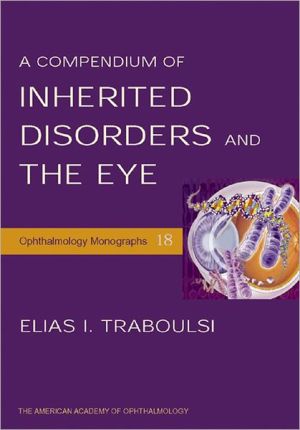

 |

|

The average rating for Compendium of Inherited Disorders and the Eye based on 2 reviews is 4 stars.
Review # 1 was written on 2020-11-24 00:00:00 Bill Bridger Bill BridgerA very insightful read for anyone wanting to explore the world neuroscience. This is especially helpful if you are even looking to design behavioral psychological or neurological studies. Overall an informative and robust introduction to visual neuroscience. |
Review # 2 was written on 2011-11-06 00:00:00 Stefano Atzori Stefano Atzoriwow. ok there's two completely distinct types of vision going on. conscious, which is the pictures of our world we see in our heads and describe, and vision that the unconscious mind uses to guide behavior. in this book, they are studying a patient who lost conscious vision due to brain damage -- she could not discern shapes or identify objects, although she could still see color and texture -- but retained the ability to USE her vision for actions perfectly -- hiking, grasping objects, etc. its quite clear from other experiments, that frogs at least, have no world-picture whatsoever. they instead have 5 modules in their brains for certain types of behavior, which are wired to the eyes totally independently. and you can crosswire the frog's use of vision to catch a fly, for instance, to the opposite eye than normal, so that you show it a fly on its left and it flicks out its tongue to the right. like a g-d hot and cold knobs in a fucked up shower. yet, the crosswired frog can still jump around obstacles perfectly because that is controlled by a different module. my mind is kind of reeling imagining what it would be like to move through the world so adroitly with no "picture" of the world, not even a concept of a picture. possibly this is how Daredevil feels. i no longer want to look frogs in the eye (creepy). i am also going to have to re-evaluate some aspects of my relationship with the pet salamander i had in high school. oh cool. the visuomotor system isnt fooled by optical illusions that get the perceptual system. it figures out the size of things using binocular vision -- not by juxtaposing two images, but by measuring how much you move your eyes to converge them on what you are looking at. weird also, your brain is sending back signals to the 2-d map of the light on your retina, even more so than your eyes are sending signals to your brain. this could be how the perceptual system is able to communicate with the visuomotor system -- it looks at the visual field, identifies, say, a cup, and then can flag it for the visuomotor to calculate where it is in relation to the hand, and then grab it. of course, there's a whole 'nother system for knowing where your hand is, and that's gotta communicate with the visuomotor one too. plus other complications as well. i begin to see why i trip over stuff. it's very, very cool to read about how the woman these studies were based on has adapted to her perceptual deficit and created neurological workarounds in order to do things in the years since her brain was damaged. as the authors point out, "there's more than one way to skin a cat" |
CAN'T FIND WHAT YOU'RE LOOKING FOR? CLICK HERE!!!